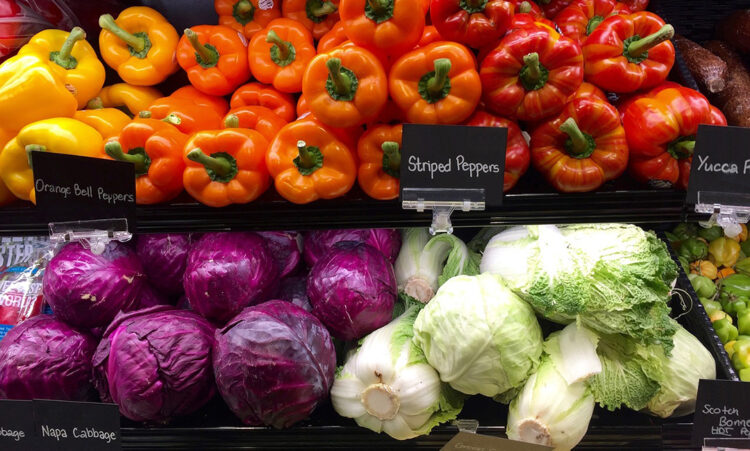
May 14. By TL Bernthal. While pundits and politicians pontificate about what can be done about grocery prices, the public is paying the price — that is, higher prices.
The same list of items at Aldi, Food Lion, Harris Teeter, Publix and The Fresh Market costs up to $6 more now than in October 2024. The 14 items cost between $40 (Aldi) and $75 (The Fresh Market), depending on where you shop. Check out the side-by-side comparison here.
In Cornelius, you could find a dozen large eggs for less than $5 at Aldi, Harris Teeter and The Fresh Market when Cornelius Today took its price survey Wednesday, April 23 to Saturday, April 26. As always, no sale prices were used.
The average price in a U.S. city for a dozen eggs in March was $6.23, a record high, according to The Associated Press. That’s an increase of over 25 percent since January.
Coming in near or higher than that average price were eggs sold by Food Lion at $6.49 for a large dozen and $6.99 for cage free; Publix charged $5.29 and $6.29, respectively.
The last time a dozen eggs cost less than $2 was January 2022, according to data from the federal Bureau of Labor Statistics. Egg prices have spiked dramatically in recent years — up 53 percent nationwide from last year — amid a bird flu outbreak that reduced supply.
When Cornelius Today took its first grocery survey in November 2020, large eggs cost 90 cents to $2.10 a dozen; Nestle chocolate chips were $2.50 to $3.50 (now $5 and up); a 20-ounce box of Cheerios cost $4 to $5 (now $4 to $8); and a gallon of milk was $3 to $3.75 (now $3 to $10).
When Cornelius Today shopped the 14 items it compares, they cost:
• $40.31 at Aldi, up from $33.68 in February 2024 and $37 in October 2024;
• $61.06 at Food Lion, up from $55.35 in February 2024 and $55.85 in October 2024;
• $64.86 at Harris Teeter, up from $60.16 in February 2024 and $60.46 in October 2024;
• $61.90 at Publix, up from $60.80 in February 2024 and $54.31 in October 2024;
• $74.66 at The Fresh Market, up from $71.26 in February 2024 and $69.83 in October 2024.
What’s next?
Transoceanic shipping traffic was shaken by the promise of massive new taxes / tariffs on American importers. Supply chains are disrupted already and there are expected to be shortages and possibly increase prices on imports.
The United States currently imports $263 billion in food — fruits, vegetables, seafood, coffee and tea, processed foods — and those prices will increase, which will drive up grocery prices even more.
What to do?
The average cost of food at home for a family of four, according to the United States Department of Agriculture (USDA), ranges from $567 to $1,296 per month, which comes out to approximately $130 to $300 per week.
Here are some tips for getting the most out of your budget:
• Shop generic and store brands.
• Bulk quantities of non-perishables may be cheaper, if you have the storage. But BOGO means half-price for one; consider what you really need.
• Plan meals. Always shop with a list and on a full stomach.
• Reduce food waste. Plan meals that incorporate leftovers, which can reduce waste and save money on ingredients.
• Use store loyalty programs and coupons (digital or otherwise).
• Shop for produce in season. Or grow your own vegetables and herbs.
• Shop the perimeter of a store for healthier options and sales.
Not sure how much to buy?
These two methods offer guidance.
Try the 5-4-3-2-1 grocery shopping rule, which suggests buying 5 vegetables, 4 fruits, 3 proteins, 2 sauces/spreads, and 1 grain/starch, plus 1 treat. This method is a simple way to ensure a balanced and diverse grocery list, potentially saving money and time by limiting impulse buys.
Or the 621 method. The 6-to-1 grocery method instructs shoppers to buy six veggies, five fruits, four proteins, three starches, two sauces and one fun item.



